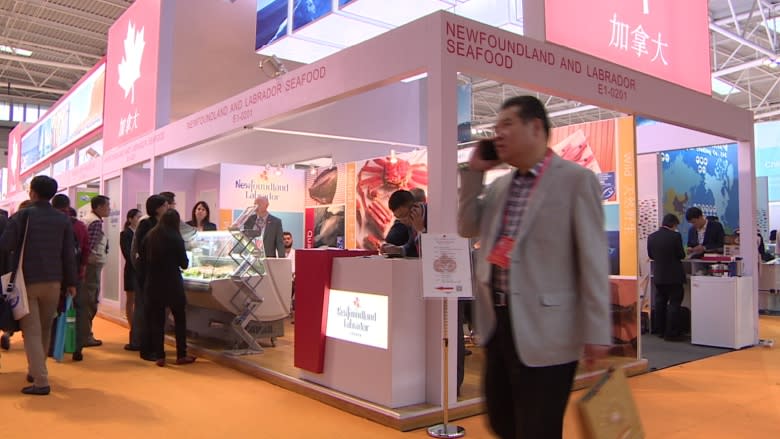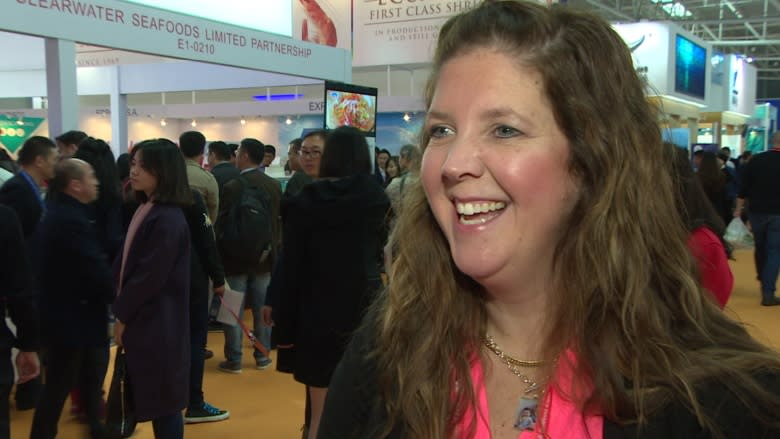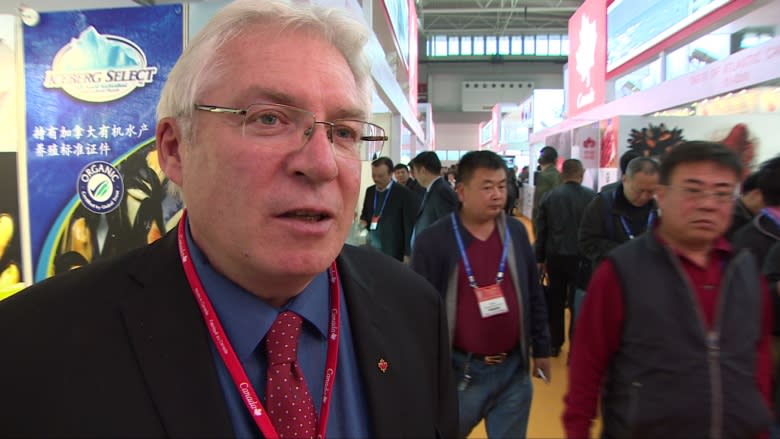Fishing for China: Making money off Asia's growing appetite
If you want to sell seafood to the Asian market, the China Fisheries and Seafood Expo in Qingdao is a must-attend.
It's the biggest of its kind in Asia and one of the biggest in the world.
This year's attendance weighed in at 30,000 people, 1,300 companies and 45 countries.
At the corner booth of the Canadian pavilion — which is in just one of seven large convention centres, all on a massive exposition compound just on the edge of the port city of Qingdao — is the Newfoundland and Labrador counter.
A not particularly large booth at a sprawling convention means something: namely, Newfoundland and Labrador is a small global player.
Even in Canada, it ranks fourth for seafood export, behind Nova Scotia, New Brunswick and British Columbia.
That doesn't mean there's not big business being done, however.
Exports exceed $313 million
In 2014, Newfoundland and Labrador exported $313,601,246 worth of seafood to Asia.
The biggest buyer at $163,512,755 was China. The top five species for export were crab, turbot, shrimp, cockles and capelin.
In 2014 alone, Newfoundland and Labrador exported 10,167,005 kilograms of capelin to Asia worth $19,866,797.
There's also demand for plenty of other species — lobster, whelk, sea cucumbers, you name it.
On the expo floor, the activity is mind boggling. People are everywhere, going from booth to booth in all directions, exchanging business cards by the fistfull, many speaking through translators.
One of the businesspeople here is Jennifer Sheppard, the vice president of marketing with Green Seafoods out of Winterton, in eastern Newfoundland.
Asia is a major focus of her business, which exports mussels, crab whelk and seas cucumbers.
"When you look at the population in China — and you look at the potential in China, for just the market that would buy the high-end seafood —it's phenomenal," said Sheppard.
Phenomenal, sure, but no easy feat to make a sale.
"There's challenges with physically getting here, and there's challenges with figuring out how to maneuver when you're here," she tells me.
"There's language barriers, there's all those things."
She says for every 100 people she speaks with at the expo, there is real business potential with only one.
But even with that rate, Sheppard says doing business in China is worth it.
"Oh, there's huge potential. There is a huge potential," she said.
Why is the potential so great?
There of things to take into account when understanding why people think there is so much potential in china.
The first, is the diet. A voracious diet, I might add, one that astounds even those who love seafood themselves.
"It's ridiculous how much seafood they eat here," said Cyr Couturier, executive director of the Newfoundland Aquaculture Industry Association.
"I mean, North Americans eat about 15 pounds per year per person. In Asia. it's more like 80 pounds per year per person," he said.
"It's an insatiable appetite."
The second thing to know is the demographic trend.
"You're now seeing inland provinces and inland cities that — in China terms — are small but in North American terms are massive," said Darrell Roche, the vice-president of sales and procurement for Newfoundland-based Whitecap Seafoods.
"You have cities, like Dalian, that are 7,8,9 million in population."
Any of these cities would rank in the top five of the most populous cities in North America. Many people in our continent would have trouble recognizing their names.
Roche, a veteran of selling seafood to Asia, said China's middle class is exploding right now in terms of disposable income.
What does that mean for Newfoundland and Labrador?
"There's still a lot of growth potential for all the products from Atlantic and Eastern Canada."
Fishing for China was made possible thanks to a fellowship from the Asia Pacific Foundation with support from Cathay Pacific.







